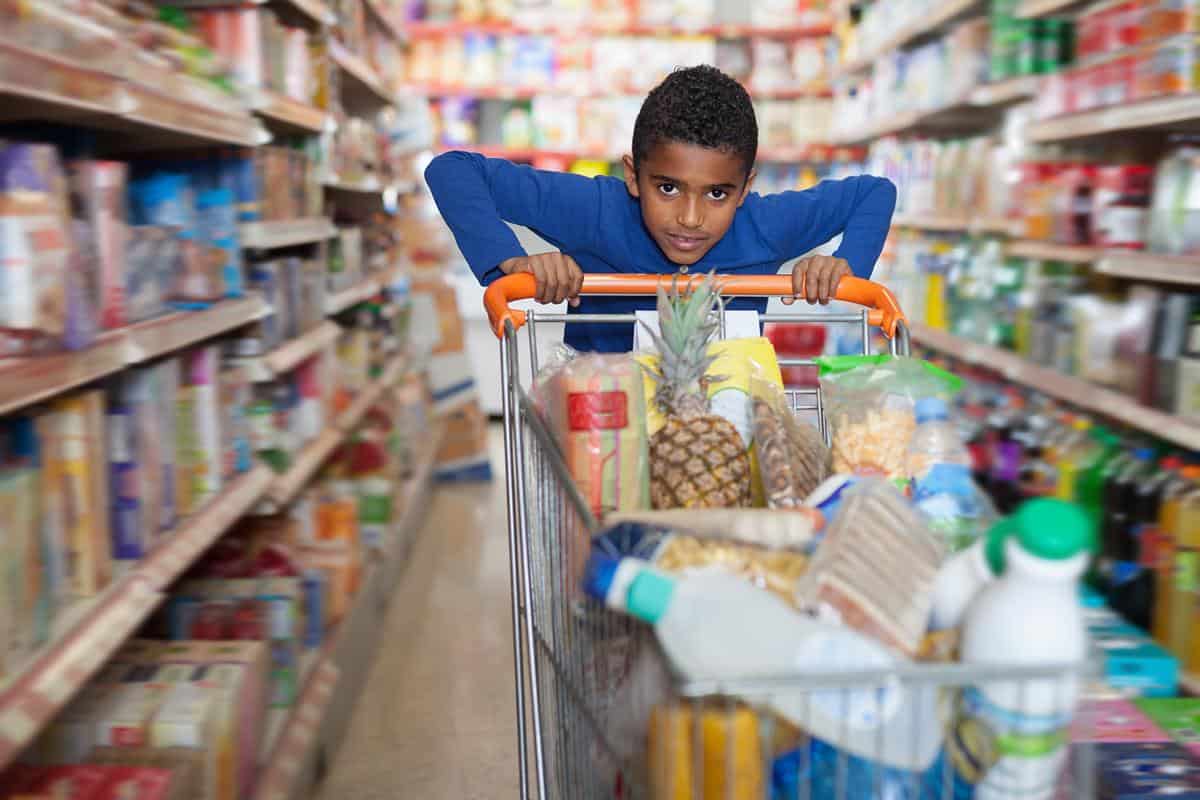British shoppers bought less both online and offline in May, as they reduced outlay on food and household goods, but spent more on clothing and footwear ahead of holidays, the latest official figures suggest.
The May 2022 ONS Retail sales, Great Britain report suggests that the amount shoppers bought was down compared to last year and the previous month. The proportion of sales taking place online fell to 26.6%, although it remains higher than before Covid-19.
How shoppers spent online
Online shoppers spent 7.9% less in May than they had a year earlier, and 1.7% less than a month earlier, in April 2022. The month fall was led by non-store retailers and by department stores.
Some 26.6% of sales took place online in May 2022. That’s down from 27.1% in April, but remains higher than the 19.7% that were online in February 2020 before the Covid-19 pandemic started.
Online food sales fell by 10% on last year and 0.2% on April to account for 9.3% of sales in this sector.
Some 21.6% of non-food sales were online, after a 10.6% year-on-year fall. Sales were, however, up by 0.4% month-on-month.
Growth was strongest in clothing and footwear sales, with increases both compared to the previous year (+1.7%) and the previous month (+1.6%). Just over a quarter (25.8%) of sales were online.
‘Other’ stores – a category that stretches from electricals retailers to bookshops – saw a 1% month on month increase in online sales. Sales were 10.9% down on last year, and accounted for 17.1% of retail sales in the category.
Household goods stores – where 22.9% of sales were online – saw the sharpest year-on-year decline (-21.2%), as well as a smaller month-on-month decline (-0.3%).
Department store sales were 21.8% online, having fallen both on last year (-15.7%) and the previous month (-1.7%).
Non-store retailing – which includes pureplays, market stalls and auctioneers – is the largest online category, accounting for 46.3% of online sales. Some 87.2% of non-store retailing sales were online – down both on last year (-5.1%) and on the previous month (-3.5%).
How shoppers spent across channels
Shoppers spent 1.7% more in May 2022 to buy 5.7% fewer goods – excluding automotive fuel – than they did a year earlier. They spent 0.2% more than a month earlier to buy 0.7% fewer goods. They also spent 11.4% more than they did in pre-Covid February 2020 to buy 3% more goods. The figures reflect rising inflation, which is now running at over 9%.
Shoppers bought 0.6% less food than in April 2022, continuing a downward trend. Shopper spending on food was also 2.4% below February 2020. The ONS Opinion and Lifestyle Survey covering May 11 to 22 found that 88% of adults said their cost of living had increased – up from 62% in November, with increases in the cost of food shopping cited by 93% of those shoppers. Some 44% said they were now buying less food when shopping.
Non-food sales were flat, although 2.1% above February 2020 levels. Clothing sales rose by 2.2% in volume – retailers said this was linked to holiday planning – but volumes fell in sales of household goods (-2.3%) as shoppers’ concerns rose about affordability, and at department stores (-1.1%).
What industry commentators are saying
Commenting, Helen Dickinson, chief executive of the British Retail Consortium, says: “Households reined in spending as the cost-of-living crunch continued to squeeze consumer demand. Many customers are buying down, particularly with food, choosing value range items where they might previously have bought premium goods. High value items, such as furniture and white goods, were also impacted as shoppers reconsidered major purchases during this difficult time.
“Higher operational and input costs have filtered through to prices, meaning both retailers and their customers are in for hard times ahead. Retailers are doing what they can to support households by absorbing as much of the costs as possible, expanding their value ranges, offering discounts for some vulnerable groups, and investing in their own supply chains to reduce future costs. If costs continue to spiral, Government will need to be ready to support struggling households.”
ParcelHero head of consumer research, David Jinks says: “The amount we spent online tumbled -7.9% compared to May 2021, before soaring inflation became a significant problem. Consumers are obviously cutting back on all non-essential spending, and who can blame them?
“Despite this fall, online shopping retained 26.6% of the overall retail market, considerably more than the 19.7% it achieved in February 2020, before the pandemic changed shopping habits forever.Longer term, UK retailers must align their High Street and online sales to counteract a likely further fall in consumer confidence in the months ahead.”









